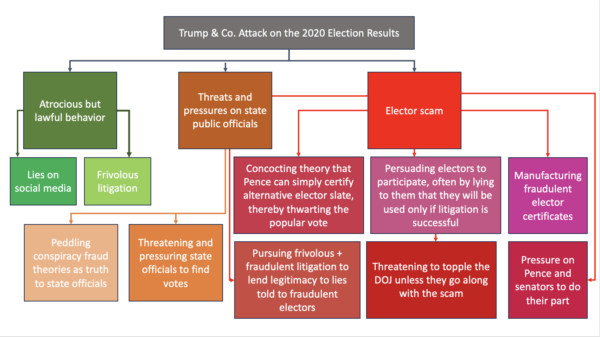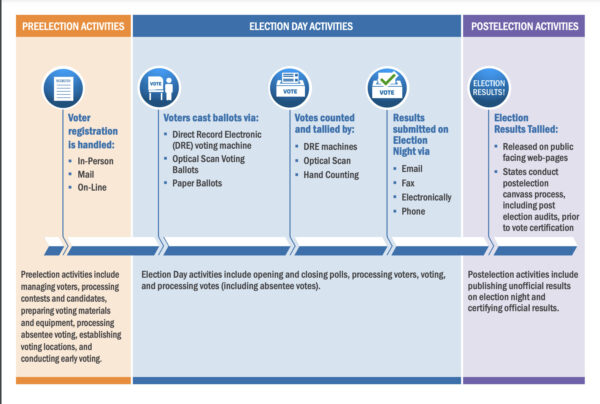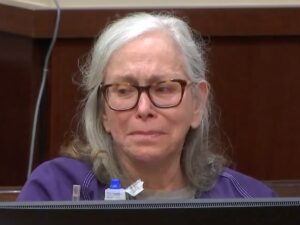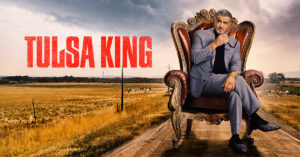
It’s a surreal experience to read the new Trump indictment, which you can find here verbatim with NYT annotations, while in Israel – it reads disturbingly prophetic about other parts of the world. It’s also been deeply unpleasant to relive the events from last year, as they are narrated chronologically and concisely (rather than revealed daily through the news cycle.) I just spoke about this with the one and only Mitch Jeserich on KPFA and here’s a link to the show. Here are some of the basics.
Charges
The indictment consists of four counts, all of which are based on the same factual basis:
- Conspiracy to Defraud the United States, which requires proving that (a) two or more people (b) conspire to commit an offense against or defraud the United States and (c) at least one of them commits an act to further the conspiracy (5yrs max and/or a fine);
- Conspiracy to Obstruct Justice, which requires proving that (a) two or more people (b) conspire to obstruct justice [see below] and (c) at least one of them commits an act to further the conspiracy (sentence is the same as for obstruction, a 3yr exposure);
- Obstruction or Attempted Obstruction of Justice, which requires proving that the defendant (a) knowingly (b) use intimidation/threats/corruption to (c) persuade or attempt to persuade another person to (d) change documents or withhold records needed for an official proceeding, or, which is more directly applicable here, that the defendant (a) corruptly (b) obstruct, influence, or impede, (c) an official proceeding (3yr exposure); and
- Conspiracy Against Rights, which requires proving that (a) two or more persons (b) conspire to injure, oppress, threaten, or intimidate any person (c) in the free exercise or enjoyment of any right or privilege [in this case, the right to vote.]
Who
Only Trump is listed by name in the indictment, with six other co-conspirators referenced by numbers. The purpose is, likely, to leave the door open for any of them to decide to testify against Trump before they are named and officially charged. Five of the co-conspirators are fairly easy to identify based on the information we already have about the 2020 election putsch: Co-conspirator 1 is Rudy Giuliani, Trump’s right-hand and spreader-par-excellence of manufactured election fraud conspiracies; co-conspirator 2 is John Eastman, the spirit behind the effort to puppeteer Pence, VP and President of the Senate, into subverting his ceremonial role by refusing to certify the electors for Biden and certifying fake electors for Trump in their stead; co-conspirator 3 is Sidney Powell, disgraced attorney who tried (and lost) Trump’s baseless election cases; co-conspirator 4 is Jeffrey Clark, Trump’s man in the Department of Justice who met with Trump behind his bosses’ back to further the conspiracies even they would not back and tried to fire his own boss; co-conspirator 5 is likely Kenneth Chesebro, the mind behind the fake electors’ scheme and the operator filing sham legal proceedings so as to swindle the fake electors into agreeing to participate in the scam; I’m unclear on who the sixth co-conspirator can be, and it looks like mainstream media commentators are also unsure. This person, who is described as a “political consultant,” was behind some of the memos that crafted the language submitted to the fake electors.
What They Did

The story of what happened before January 6th was eclipsed by the violent putsch that follows, which is why you can be forgiven for forgetting the details (they were also doled out chaotically and serially while the events were happening.) Reading the indictment brought the story and the characters back into clear focus, and here’s a simple (hopefully not oversimplified) chronology.
The way the U.S. presidential election works is this: each state has its own regulations for figuring out the popular vote.

This means that, when challenging presidential election results, candidates have to interact with state bureaucracies and pursue litigation in the different states attacking the integrity of the election. The indictment does not attack all of Trump’s litigation challenges which, while frivolous (32 submitted, 0 won) were not unlawful. It focuses on illegitimate pressures and threats that Trump & Co. placed upon various state bureaucrats, most famously in Georgia (the “find me enough votes” threat emitted to the Georgia Secretary of State, now the focus of a state criminal investigation that might ensnare Trump in more criminal proceedings.) Trump’s incessant harassment of state bureaucrats–most of them loyal to Trump, people who worked for his campaign and hoped he would win but did not go as far as to throw the election his way–consisted of banding around (and repeating) false theories of fraud (which Giuliani and others parroted around social media), consistently ignoring the refutations of state officials, lying to them about supposed evidence that backed up the conspiracy theories, threatening them with criminal charges or political consequences, and repeatedly pestering them to deliver results in the face of no factual support for fraud claims.
Severe as these behaviors were, the heart of the indictment has to do with how Trump and his co-conspirators attempted to manipulate the electoral college process to thwart the popular vote. This NPR story, published during Trump’s scheming but before January 6th, offers a good primer to how states select their electors. In short, there are 538 electors, one for each U.S. senator and U.S. representative, plus three for Washington, D.C. Electors are selected by the state, usually from lists made by state parties. In 32 states and D.C., electors must vote for the candidate the party has nominated, and the Supreme Court has found that laws that bind electors to the outcome of the popular vote are constitutional. The list of electors by party is certified at the state level and then sent, through a special verification process, to the senate, where it is ceremonially certified by the Vice President. The electors then cast their votes–if a candidate won by majority, he or she receives all the electoral votes–and thus the presidential election is decided (watch this video of how the electors announce their vote casting.)
Trump’s conspiracy targeted this process. [Probably] John Eastman and [probably] Kenneth Chesebro concocted a legal theory according to which the Vice President, who is also the President of the Senate, holds an authority over the electoral process that goes beyond his purely ceremonial role of certifying the electors. According to their theory, Mike Pence could simply refuse to certify the electors’ votes, opting instead to certify votes by a slate of alternative electors casting their votes for Trump. To make this theory into reality, they reached out to prospective electors to persuade them to participate in this scheme. Some refused to have anything to do with it, and many others expressed doubts about the legality of this plan. To mollify and assuage them, the co-conspirators lied to some of the alternative electors in some of the states, telling them that their votes for Trump would only be used in the event that litigation produces evidence of election fraud. For verisimilitude of these false claims, Trump’s operatives–Giuliani, Powell, and their lackeys–actually filed frivolous cases in the seven states in which this plan was pursued, persuading the so-called alternative electors that things were being set in motion that could result in their votes counting (the plan was to push forward these fictitious votes regardless of the lawsuits.) In some cases, the co-conspirators (notably, Chesebro) crafted the fallacious elector certificates themselves. The co-conspirators tried to push these slates of electors onto the Vice President’s staff, in some cases with the staff members declining to receive them on his behalf.
Pence also had to be convinced to go along with this scheme, and so, Trump et al. conducted numerous meetings with Pence, putting direct pressure on him to participate in the face of his repeated declarations that he did not believe he had the authority to thwart the popular vote. Trump’s choice of words at these meetings matters: he threatened Pence to publicly criticize him for his refusal to participate in the plan (this rebuke reverberating in the social networks during the ramp-up toward January 6) and included only certain people at the meetings (notably, not the White House Counsel, who repeatedly stated that the plan was not legitimate.) Trump also used Jeff Clark to pressure his superiors at the Justice Department (notably, Jeffrey Rosen, then the Acting Attorney General) to go along with the electoral thwarting plan. You can find more information about the near-catastrophe in the Justice Department in this Washington Post piece. Essentially, if Rosen et al. were not going to go with the fraudulent electoral votes, Trump would fire them and place Jeff Clark atop the Justice Department; he backed down from this plan only when told by White House counsel that mass resignations would ensue.
Even though the indictment does not tackle Trump’s role in inciting the Jan. 6 putsch, it does tie those events to the charged offenses. While engaging in the machinations required for the fraudulent electoral plan, Trump continuously manufactured public belief in the integrity of the plan by tweeting about it to his fans and stoking their anger toward Pence and others who would not play ball. This was the trigger for the Jan 6 gathering, which Trump initiated, and the hook for the insurgents’ rage.
Criminal Behavior vs. Atrocious Behavior that Isn’t Criminal
The indictment seeks to provide clarity on what parts of Trump’s behavior surrounding the elections were and were not criminal. Much of his truly atrocious behavior, such as the lies he massively and systematically spread about the legality of the election, were the epitome of maliciousness and political irresponsibility, but according to the indictment do not constitute criminal offenses, as they fall under the umbrella of free speech: Trump had “a right, like any American. . . to claim, falsely, that there had been outcome-determinative fraud during the election and that he had won.” He also had a right–which he used, by engaging in frivolous litigation–to use legitimate means to challenge the results of the election. The indictment distinguishes these behaviors from the unlawful steps Trump and his co-conspirators undertook to change the results of the election–namely, threats, pressure, and efforts to bring about a fictitious and delusional legal process by which Pence, singlehandedly, would discount the votes of American citizens and instead would hand the decisionmaking process to fake electors.
This distinction might be clear to me and you, but I decided to take a trip through the looking glass and read up on Fox News to see what Jonathan Turley and Andy McCarthy are peddling. Out of all the drivel in that story (political witchhunt yada yada) the least preposterous proposition comes from Andy McCarthy, who has this to say about the fake electors theory: “[I]n this country, what we do with frivolous legal theories is we figure that the jury system will take care of it or the political system will. We don’t criminalize them. And that’s what this indictment attempts to do.” In other words, McCarthy seems to bundle John Eastman and Ken Chesebro’s fake electors plan with the legitimate efforts to reverse the course of the election: rather than a malicious, fictitious scheme to wrest the election results from the hands of the electorate, this was merely a legal theory–and don’t all legal theories stand a chance? The answer the indictment provides is this: there’s a difference between submitting to a court the possibility that the Dominion machines were flawed or that people who shouldn’t vote did (nonexistent folks, nonresidents, noncitizens, dead people), all of which are legitimate challenges to the election whether they succeed or (as in this case) fail, and submitting a proceeding according to which it is, on this planet, totally fine to substitute actual votes for imaginary ones and then threaten, pressure, and push people to pretend that the imaginary votes are real. At least McCarthy admits the theory was “frivolous”; even a broken clock shows the right time twice a day.
The Mental Element (Mens Rea)
All the charges pursued in the indictment require a fairly high degree of intent: conspiracy calls for intent to further the aims of the conspiracy itself, and obstruction of justice requires general intent. For our purposes, a criminal conviction here could result only if a jury agrees that Trump actually knew that the false fraud theories he was peddling on social media and threatening state secretaries to accept were, indeed, false. The indictment spends a long time elaborating how we know that Trump was lying, rather than delusional. I’m not sure the distinction is as clear to me as it is to them. We’re clearly talking about someone with serious delusions of grandeur, and I think that serial liars and psychopaths are successful in what they do because, on some level, they believe the lies they tell. I wonder whether the defense theory here will be that the lies were actually true (this is not a winning proposition in court, but they might luck out with some Trumper jurors) or that Trump thought they were true (which is also going to be tough to prove, given the multiple sources, including people close to him and credible to him, who repeatedly tried to disabuse him of these notions.) I’m betting his ego will not let him claim any sort of mental deficiency or clinical delusion.
What This Portends for 2024
Dan Rather (whose newsletter Steady is always a worthy read) wrote today:
Today marks a reckoning, but it’s far from a resolution. The danger Trump and his legions of MAGA supporters pose remains very present, very real, and very dire. The polls indicate this con man, divisive charlatan, and wrecking ball to the rule of law is running away with the Republican nomination for the presidency. And he looks, at this point, despite everything, to be competitive with President Biden. He could be reelected.
The more scrutiny he receives, the more evidence of his unfitness for office is laid out publicly, the more his stalwarts rally behind him. Trump has no coherent or persuasive rejoinders to the numerous charges he faces. He instinctively relies on his overused playbook of lies, divisiveness, and dystopian rhetoric. It’s all he’s got. Nevertheless, his crowds roar their delight without hesitation.
This is certainly true with respect to the Fox News commentators whose takes I read this morning, and I’m sure the talking points were set long ago. Nothing will persuade the truly faithful. A lot of what will happens here depends on timing. Should Trump be able to run and, perhaps, get elected, all this effort will come to naught, and if, Goddess forbid, I were on the defense team, my number one mission would be to file for continuances upon continuances. It’s not likely that there will be immediate movement on this in a criminal courtroom anytime soon. The voir dire will be absolute hell and the media coverage will be ridiculous.




2 Comments
How do you do a jury selection for a case like this??!?
Excellent question. Carefully? With a lot of consultants? With judicious application of peremptory challenges? It’s going to be such a mess.